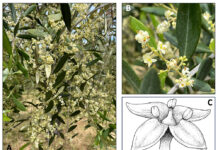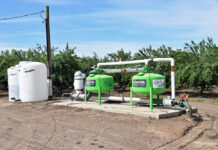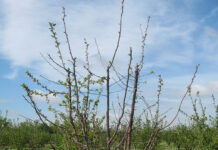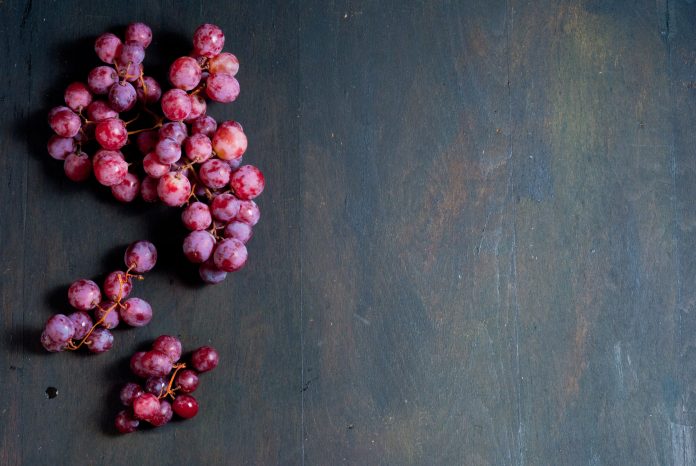Biostimulants are a broad category of biological products used in crop production to enhance and/or improve conventional nutrition programs. The term “biostimulant” was officially defined in the Agricultural Improvement Act (aka Farm Bill) of 2018 as:
“[Plant biostimulants are] a substance or micro-organism that, when applied to seeds, plants, or the rhizosphere, stimulates natural processes to enhance or benefit nutrient uptake, nutrient efficiency, tolerance to abiotic stress, or crop quality and yield.”
However, on March 25, 2019, the US Environmental Protection Agency (EPA) released a report titled, “Draft Guidance for Plant Regulator Label Claims, Including Plant Biostimulants” to better understand manufacture label claims for plant growth regulators and biostimulants. In it, the EPA defined biostimulants in much the same way as found in the Farm Bill, except that EPA’s definition refers to improving soil as a possible outcome rather than crop quality or yield.
The EPA is deciding if and how biostimulants should be regulated. If manufacturers make claims that are similar to plant growth regulators, which are subject to regulations found in the Federal Insecticide, Fungicide, and Rodenticide Act (FIFRA), then they would require registration with the EPA. Some see this as an opportunity to raise the bar on biostimulant products, and reduce outrageous claims not supported by replicated field research. Others are less optimistic about more regulation and the potential for increased costs on useful products or the complete loss of product categories.
Biostimulant Categories
Biostimulants fall into three general categories 1) acids (such as fulvic or humic), 2) microbials (such as beneficial fungi or rhizobium), and 3) extracts or secondary metabolites (such as polyphenols or botanicals). However, there are other types of products, such as nitrogenous compounds or proteins, which don’t fit neatly into the primary categories (Heacox 2018). Acid based products can be applied as foliars, through irrigation systems, or directly to the soil. Depending on application, they have been shown to reduce plant stress, increase root growth and/or improve soil health. Microbial products are primarily fungi or bacteria that help improve nutrient uptake either directly or by improving soil conditions for the plant. Some microbial products may need an incubation period prior to use, which requires planning if large acres will be covered. Extracts can also be applied as foliars or through irrigation systems. They have been found to improve soil conditions for roots or microbes that are able to make elements more available.
Biostimulants vs Fertilizers
It is important to remember that biostimulants are not fertilizers. Inorganic fertilizers are mineral salts that consist of single or multi-nutrient constituents in varying ratios (i.e. calcium ammonium nitrate=CAN17). In contrast, organic fertilizers are plant and/or animal derived products that also have varying ratios of elements. Both types of fertilizers are regulated with a focus on quality and quantity guaranteed by manufactures. Biostimulants are biological products that improve crop growth through a variety of methods (i.e. reduce plant stress, improve nutrient uptake). They may have some low levels of nutrient value, but that is not their primary benefit to crops. Biostimulant activity is not fully understood but it is thought that they act indirectly to improve crop health by increasing soil microbe activity, or through the additions of acids, plant hormones, or metabolites that react with the biological processes.
Biostimulant research is ongoing and has increased substantially since 2010 to help demonstrate their impact and activity on plant growth. Dr. Russell Sharp of Plater Bio, who spoke with AgriBusiness Global, said that in 2010 a combination of new technologies, increasing interest from investors, and lower growth in traditional pesticide and fertilizer sales, led to a greater interest in biostimulants (Pucci 2018). Given the number and diversity of biostimulants, performance claims about what can be achieved when applied to a crop vary widely. Some evidence suggests biostimulants may reduce plant stress by improving soil environmental conditions when there is a water deficit, high disease pressure, non-optimal pH, or salinity levels in the soil that might otherwise reduce plant health or growth. Under these conditions, biostimulants are thought to increase nutrient uptake and yield, and may even improve fruit quality. Some research has found microbial products solubilize essential nutrients to increase their availability to the crop and enhance drought tolerance by stimulating root growth (Calvo et al. 2014). Still, while some work has shown that adding microbes to the soil benefits crops, other research shows less positive results. One study found establishment of arbuscular mycorrhizal fungal inoculants was highly variable at best and did not significantly improve crop growth even when they were present (Hilton 2019). Limited conclusive data suggests growers should view biostimulants as products that enhance the efficiency of fertilizers so that less is required during the season.
Considerable research has focused on biostimulant use in annual crops, but less research exists for permanent crops such as grapes. Biostimulant grape research has mostly been with foliar applications. Foliar applications pose the benefit of entering the plant and potentially reacting more rapidly with the biological processes than if they were applied to the soil. Foliar applied biostimulants that have shown benefits to grapes include chitosan, which improved postharvest grey mold infections equally as well as synthetic fungicide applications (Romanazzi et al. 2006). Chitosan was also shown to protect against downy mildew (Romanazzi et al. 2016), which is a devastating disease that impacts foliage and fruit. Some studies have shown improved anthocyanin concentrations, which are an important component of grape and wine color. Foliar seaweed applications increased levels of anthocyanins and phenolics (Frioni et al. 2018), both important characteristics of wine. Another study showed that methyl jasmonate and yeast increased anthocyanins in Tempranillo grapes and wine when applied foliarly (Portu et al. 2016). Methyl jasmonate is a plant growth regulator and an elicitor, a type of organic biostimulant that can induce the synthesis of phenolic compounds, which then triggers defense reactions (Gutierrez et al. 2019). Methyl jasmonate is one of the most effective elicitors, but its use can be cost prohibitive.
Although biostimulants have been available for some time, and researched since the mid-seventies, more research is needed before conclusions are drawn on perennial crops. The multitude of products manufactured under the biostimulant umbrella, and their unique impacts on the numerous US perennial crops grown in different climates, necessitates multiple years of research to better understand their benefits.
On-Farm Research Trials
Growers interested in biostimulant products are encouraged to test them in their own vineyards. They should work closely with a Certified Crop Advisor (CCA), Pest Control Advisor (PCA) or university extension advisor to identify what plant health problem needs to be solved (i.e. improved nutrient uptake). On-farm trials should be designed so they can be repeated over multiple years and help determine if they improve production and solve the problem of interest. When possible, a trial site that reduces variables that may impact results should be chosen. For example, if improved nutrient assimilation is the goal, a trial site that has a consistent soil type would produce the best results by eliminating soil as a variable. Clay verses sandy soils retain nutrients differently and will impact plant nutrient and water uptake. Select products that claim to solve or improve a problem that has been experienced at a location over several years. Do not attempt to evaluate too many different products at once since it will make trial results more difficult to interpret. A “grower standard” is important to include so comparisons can be made against the experimental biostimulant regime. Collect data on the plant characteristics that you expect to see a change. For example, if the products being tested claim to improve yield or fruit quality, take fruit samples from each test block and compare them. If product claims are to improve plant nutrient absorption, collect leaves and/or petioles and have them analyzed by a commercial analytical lab. However, when collecting samples for data analysis, it’s important to be aware of edge or perimeter effects. Plants near edges of a plot tend to grow differently than plants in the middle of blocks that have competition for water or sunlight, and this can confound results. When possible, implement a replicated on-farm trial so that you have multiple locations to review treatments. If results from a replicated trial are consistent, that is a good indication that the biostimulants are the cause.
Contact a local CCA, PCA or university extension advisor to help design the trial, decide what data needs to be collected and interpret the results so the best information is gathered from an on-farm research trial.
More Information
To learn more about the use of biostimulants you can visit the Biological Products Industry Alliance (BPIA) website: https://www.bpia.org/ BPIA is an organization with membership from manufactures of various biostimulant products. Their focus is “advancing sustainability through biological solutions”, working with regulators to improve product registration and distribution and to educate producers on products and their best use for different crop production systems.
References
Calvo P, Nelson L, Kloepper JW. 2014. Agricultural uses of plant biostimulants. Plant Soil 383(1-2):3-41. https://doi.org/10.1007/s11104-014-2131-8
Frioni T, Sabbatini P, Tombesi S, et al. 2018. Effects of a biostimulant derived from the brown seaweed Ascophyllum nodosum on ripening dynamics and fruit quality of grapevines. Scientia Horticulturae. 232:97-106. https://doi.org/10.1016/j.scienta.2017.12.054
Gutiérrez-Gamboa G, Romanazzi G, Garde-Cerdán T, Pérez-Álvarez EP. 2019. A review of the use of biostimulants in the vineyard for improved grape and wine quality: effects on prevention of grapevine diseases. J Sci Food Agric. 99(3):1001-9. https://doi.org/10.1002/jsfa.9353
Heacox L. 2018. Biostimulants gaining ground. CropLife. https://www.croplife.com/special-reports/biologicals/biostimulants-gaining-ground/
Hilton S. 2019. Are biofertlizers actually effective? Team-Trade. https://blog.teamtrade.cz/are-biofertilizers-actually-effective/
Portu J, López R, Baroja E, et al. 2016. Improvement of grape and wine phenolic content by foliar application to grapevine of three different elicitors: methyl jasmonate, chitosan, and yeast extract. Food Chem. 201:213-221. https://doi.org/10.1016/j.foodchem.2016.01.086
Pucci J. 2018. What’s really behind the biostimulant boom. AgriBusiness Global.
https://www.croplife.com/crop-inputs/micronutrients/whats-really-behind-the-biostimulant-boom/
Romanazzi G, Nigro F, Ippolito A, et al. 2006. Effects of pre and postharvest chitosan treatments to control storage grey mold of table grapes. J. Food Sci. 67: 1862-1867. https://doi.org/10.1111/j.1365-2621.2002.tb08737.x
Romanazzi G, Mancini V, Feliziani E, et al. 2016. Impact of alternative fungicides on grape downy mildew control and vine growth and development. Plant Dis. 100(4):739-748. https://doi.org/10.1094/PDIS-05-15-0564-RE














